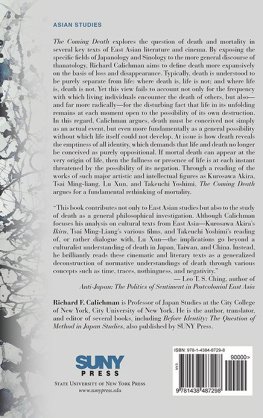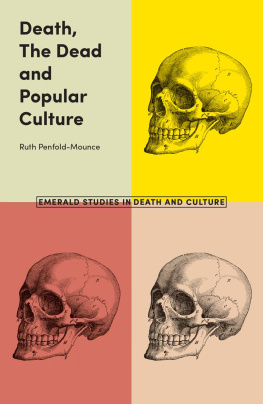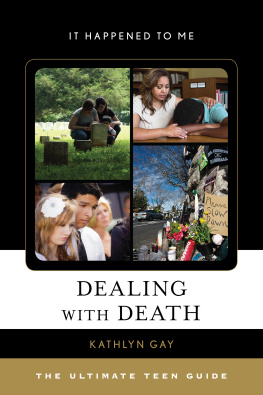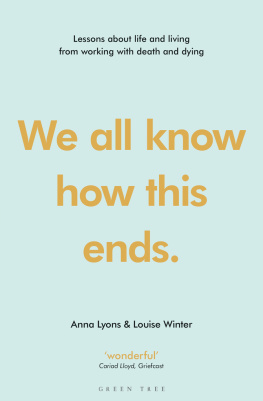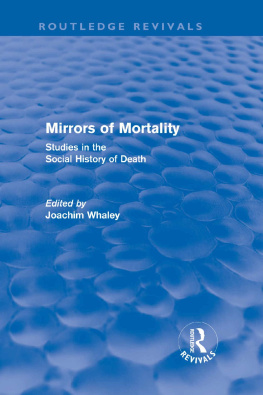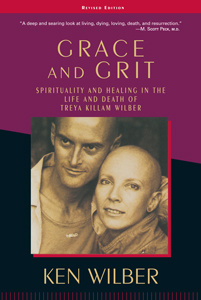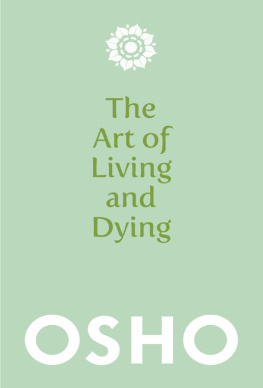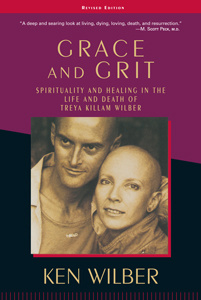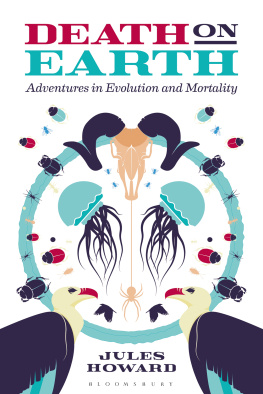THE
COMING
DEATH
THE
COMING
DEATH
TRACES OF MORTALITY
ACROSS EAST ASIA
RICHARD F. CALICHMAN

Published by State University of New York Press, Albany
2022 State University of New York
All rights reserved
Printed in the United States of America
No part of this book may be used or reproduced in any manner whatsoever without written permission. No part of this book may be stored in a retrieval system or transmitted in any form or by any means including electronic, electrostatic, magnetic tape, mechanical, photocopying, recording, or otherwise without the prior permission in writing of the publisher.
For information, contact State University of New York Press, Albany, NY
www.sunypress.edu
Library of Congress Cataloging-in-Publication Data
Name: Calichman, Richard F., author
Title: The coming death: traces of mortality across East Asia / Richard F. Calichman, author.
Description: Albany : State University of New York Press, [2022] | Includes bibliographical references and index.
Identifiers: ISBN 9781438487298 (hardcover : alk. paper) | ISBN 9781438487304 (ebook)
Further information is available at the Library of Congress.
10 9 8 7 6 5 4 3 2 1
CONTENTS
ACKNOWLEDGMENTS
The gap between the moment of writing and the moment of publication means that one can never be sure that either the person who gives thanks or the people to whom thanks are given will in fact still be alive to read these words in print. It is for this reason that my gratitude is marked, in equal measure, by hope and fear. Among the many people to whom I owe thanks, I am especially grateful to Mayumo Inoue, Atsuko Ueda, Tarek El-Ariss, and Andreas Killen for their kindness in reading and commenting on various parts of the manuscript. Mayumo Inoue also generously arranged for me to travel to Tokyo and present certain parts of the work in the summer of 2019. I would like to signal my appreciation to him as well as to Professors Gda Masato and Fujimoto Kazuisa for organizing talks at Meiji University and Waseda University.
At SUNY Press, James Peltz and Ryan Morris were instrumental in shepherding the work through to publication. I am indebted to them together with the two anonymous readers for the press, who treated the work with sensitivity.
Lastly, but in truth firstly, the book is dedicated to my parents, Murray V. Calichman and Linda Fox Calichman.
INTRODUCTION
At the time of this writing, hundreds of thousands of people have died as a result of the coronavirus pandemic, and these numbers show no signs of abating. The disease has exposed various forms of inequality, revealing that death, far from being democratic, preys especially upon those who society has rendered the most vulnerable. From the perspective of the living, the response to this horrific situation reveals the presence of death across the broad spectrum of time: we may wish to remain close to the dead whose lives now belong to the past; we may seek through our words and deeds to preserve life and reduce the number of dead in the future; and finally we may find ourselves gripped in the present by an anxiety that either we or our loved ones will fall victim to the disease and join the ranks of the dead. It seems that wherever we turn, from our everyday focus on the present back to the past and then ahead to the future, death is already there.
In this way, the historical specificity of our current time provokes fundamental questions about the relation between life and death. These questions demand reflection insofar as our initial response to death is typically one of disavowal. Death, in this account, is that which happens to others, and if it happens to me it does so only at the far extreme of my life, such that its presence remains quantitatively minor and otherwise unconnected to the sum total of experiences that will have preceded it. Death can be conceived in this manner because it is regarded as the very opposite of life. In order for life to be present, that is, death must be absent, and conversely death appears only at the site where life has disappeared. Yet these formulations raise the question of whether the relation between life and death is best understood on the basis of logic and its system of oppositions. At the very least, it seems that the act of honoring the dead on the part of the living points to the possibility that these two spheres may not be separated by such a pure and absolute gulf.
If life and death appear resistant to a thinking of logical opposition, this is because each of these terms may be seen to partly inhabit the other. Just as there can be death within life, so too might life be detected within death. At issue here is the notion of animation, derived from the Latin animus , meaning breath or soul. This term is commonly used to refer to life itself, but in truth life is less a fixed state than a kind of movement or activity that can affect death as well. The act by which the living remember the dead is one in which the latter can be said to receive the animating gift of breath. This breath allows the dead to be raised beyond the stillness of the grave and commemoratively take their place among the living. However, the living must not be thought to occupy a realm of perfect presence where they play the role of active agents in unilaterally determining when and how the dead will be mnemonically revived. For the fact is that death, too, possesses a kind of breath that brings the living close to it. In constantly reminding the living of the fate that awaits them in the future, the dead have the ability to influence life and ensure that its presence and activity remain diluted. In this way, the breath that is animus gestures toward a more general form of life, one that serves as the common source from which the division between life and death then comes to emerge.
The present volume views death above all as a question, and I have sought to keep this inquiry open and resistant to those determinations, based either in metaphysics or common sense, that might prematurely limit its scope. Death is not that which happens to others, then, nor is it something that happens to me only at the point of my extinction. Moreover, death is not to be conceived in a logical or formal sense as the strict opposite of life. To these negative assertions we may now add another: the force of death is not restricted to the realm of the organic. To be sure, death indiscriminately claims as its own humans, animals, and plants, but there is no reason to draw the border between life and death exclusively at the level of such concrete entities. Even more abstract things, such as, for example, youth, love, or friendship, come to suffer deterioration and death. In precisely the same manner as humans, the phenomena of love and friendship that endow human life with such value can suddenly emerge or be destroyed at any moment in time. And, indeed, it is this reference to time that arguably provides the key to approaching this issue of death. For the negativity of death is indistinguishable from the negativity that enables all temporal movement. In order for time to live, so to speak, it must at each moment die to itself, since the radical difference that is time prohibits the survival of any moment as purely self-identical. In its broadest sense, death is thus to be reconceived as the past in which all present instants come immediately to be extinguished.
My insistence upon conceiving of death primarily as a question, one that unsettles many of its most traditional determinations, owes much to the work of Jacques Derrida. As Derrida comments with regard to Philippe Aris, the historian most noted for his research on death:

